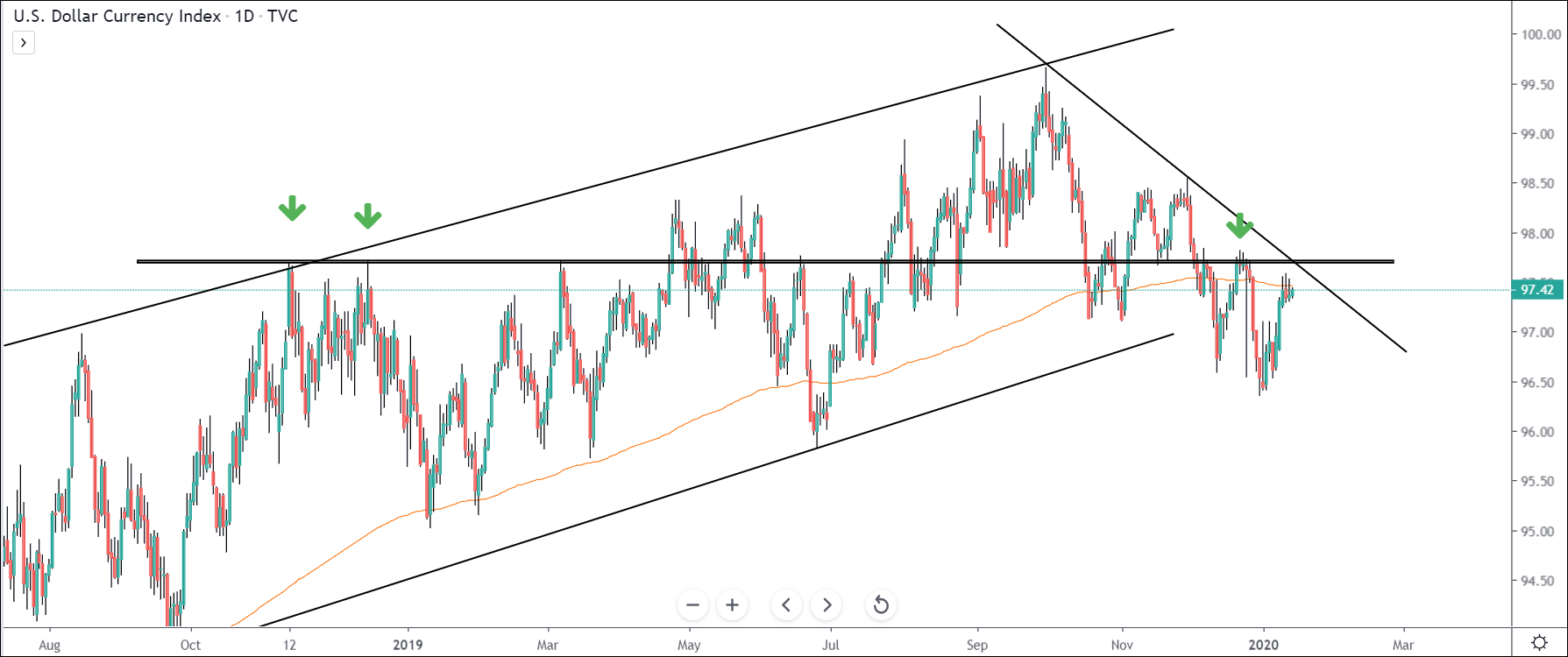The U.S. Dollar Index tracks the strength of the dollar against a basket of major currencies. (DXY) originally was developed by the U.S. Federal Reserve in 1973 to provide an external bilateral trade-weighted average value of the U.S. dollar against global currencies. U.S. Dollar Index goes up when the U.S. dollar gains “strength” (value), compared to other currencies. The following six currencies are used to calculate the index:
Euro (EUR) 57.6% weight
Japanese yen (JPY) 13.6% weight
Pound sterling (GBP) 11.9% weight
Canadian dollar (CAD) 9.1% weight
Swedish krona (SEK) 4.2% weight
Swiss franc (CHF) 3.6% weight
Today we have CPI report coming up for dollar

| Source | Bureau of Labor Statistics (latest release) |
| Measures | Change in the price of goods and services purchased by consumers; |
| Usual Effect | ‘Actual’ greater than ‘Forecast’ is good for currency; |
| Frequency | Released monthly, about 16 days after the month ends; |
| Next Release | Feb 13, 2020 |
| Why Traders Care |
Consumer prices account for a majority of overall inflation. Inflation is important to currency valuation because rising prices lead the central bank to raise interest rates out of respect for their inflation containment mandate; |
| Derived Via | The average price of various goods and services are sampled and then compared to the previous sampling; |
Technically we are looking for lower number so does weak USD
The resistance line drawn will be our next target to look at and see if price is rejecting it

